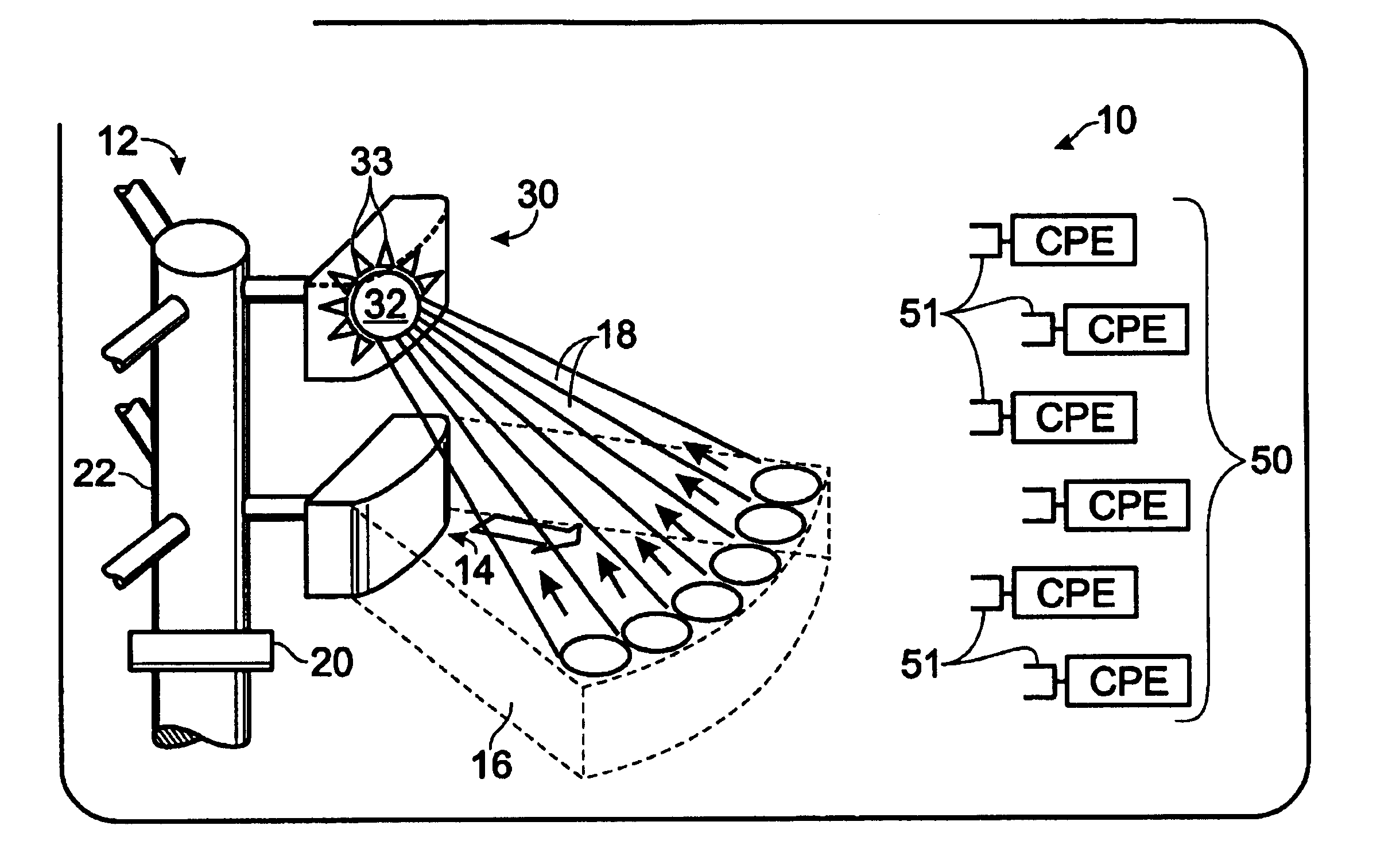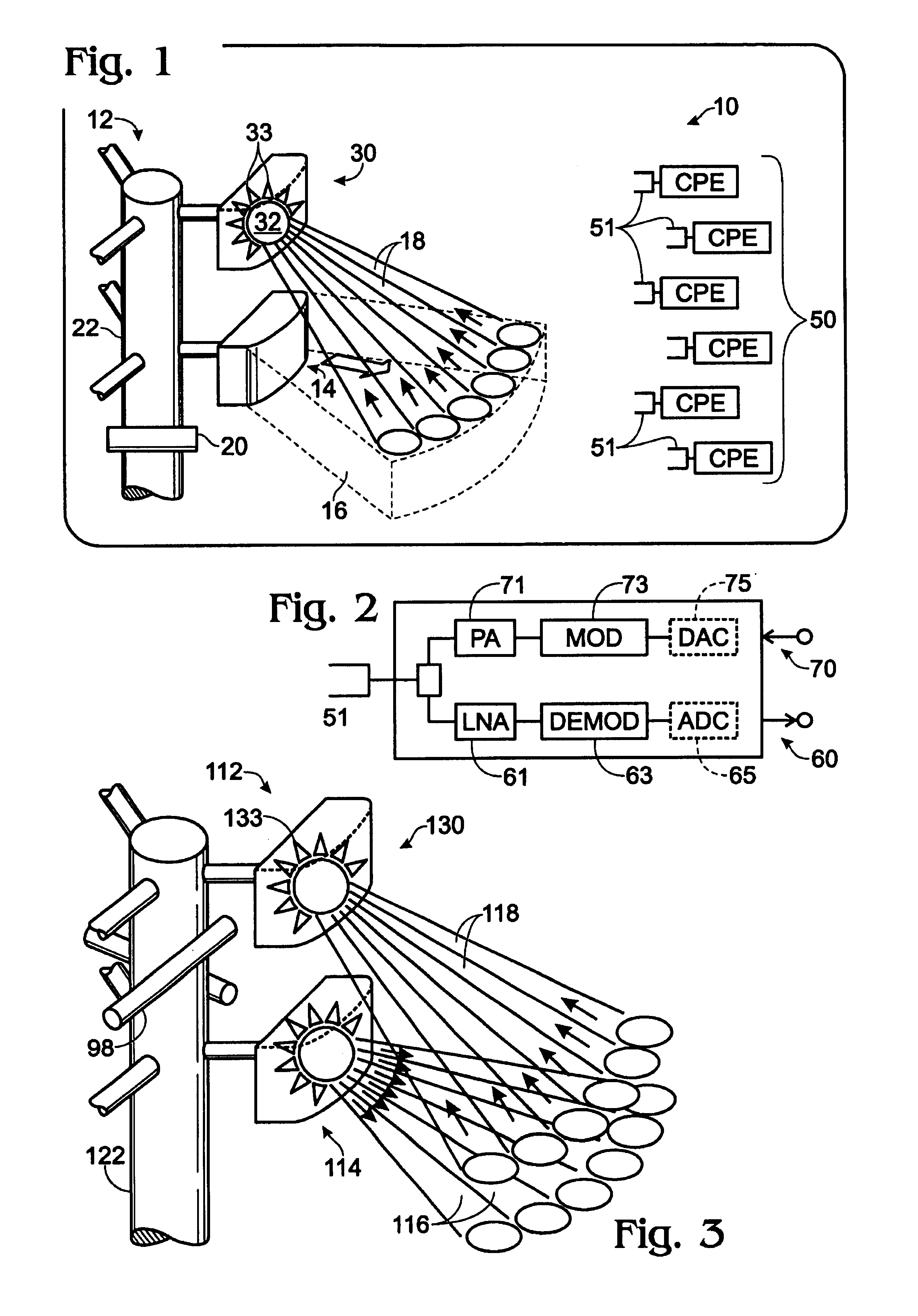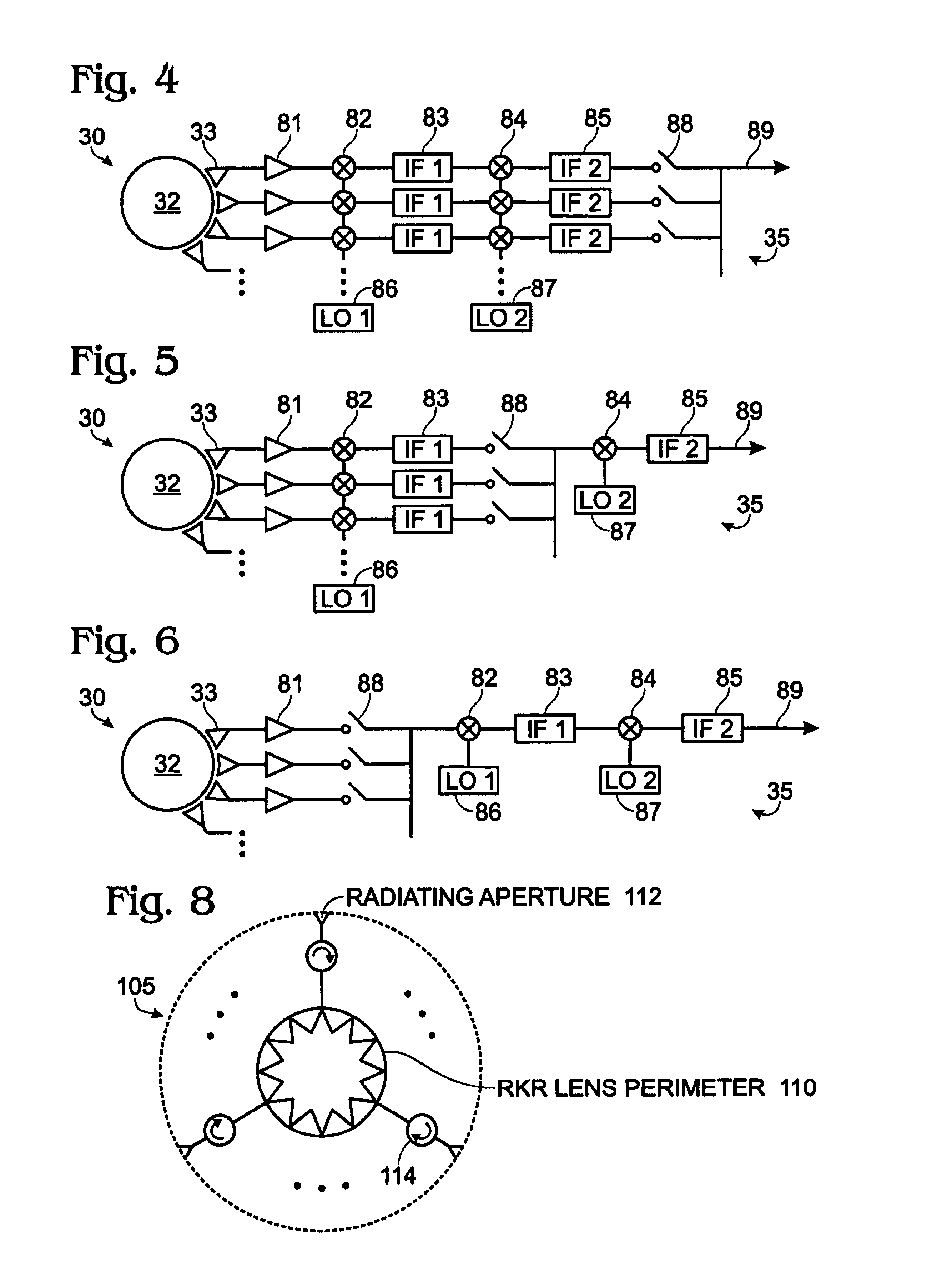Wireless point to multi-point communication apparatus and method
a multi-point communication and wireless technology, applied in transmission monitoring, high-level techniques, sustainable buildings, etc., can solve the problems of limiting the rate the rate limiting component of data transfer and communication, and the limited rate of data transfer. achieve the effect of more energy-efficient point-to-multi-point communication
- Summary
- Abstract
- Description
- Claims
- Application Information
AI Technical Summary
Benefits of technology
Problems solved by technology
Method used
Image
Examples
Embodiment Construction
taken together with the drawings.
BRIEF DESCRIPTION OF THE DRAWINGS
[0023]FIG. 1 is a diagram of a wireless point to multi-point communication system in accordance with the present invention.
[0024]FIG. 2 is a schematic block diagram of receive and transmit circuitry within customer premises equipment in accordance with the present invention.
[0025]FIG. 3 is a diagram of an alternative hub arrangement for a WCS in accordance with the present invention.
[0026]FIGS. 4-6 are schematic block diagrams of embodiments of processing circuitry for a shared aperture receive antenna mechanism in accordance with the present invention.
[0027]FIG. 7 is a diagram illustrating an implementation of a WCS in accordance with the present invention.
[0028]FIGS. 8-9 are diagrams of alternative antenna arrangements in accordance with the present invention.
DETAILED DESCRIPTION
[0029]Referring to FIG. 1, a diagram of a point to multi-point wireless communication system (WCS) 10 in accordance with the present invent...
PUM
 Login to View More
Login to View More Abstract
Description
Claims
Application Information
 Login to View More
Login to View More - R&D
- Intellectual Property
- Life Sciences
- Materials
- Tech Scout
- Unparalleled Data Quality
- Higher Quality Content
- 60% Fewer Hallucinations
Browse by: Latest US Patents, China's latest patents, Technical Efficacy Thesaurus, Application Domain, Technology Topic, Popular Technical Reports.
© 2025 PatSnap. All rights reserved.Legal|Privacy policy|Modern Slavery Act Transparency Statement|Sitemap|About US| Contact US: help@patsnap.com



